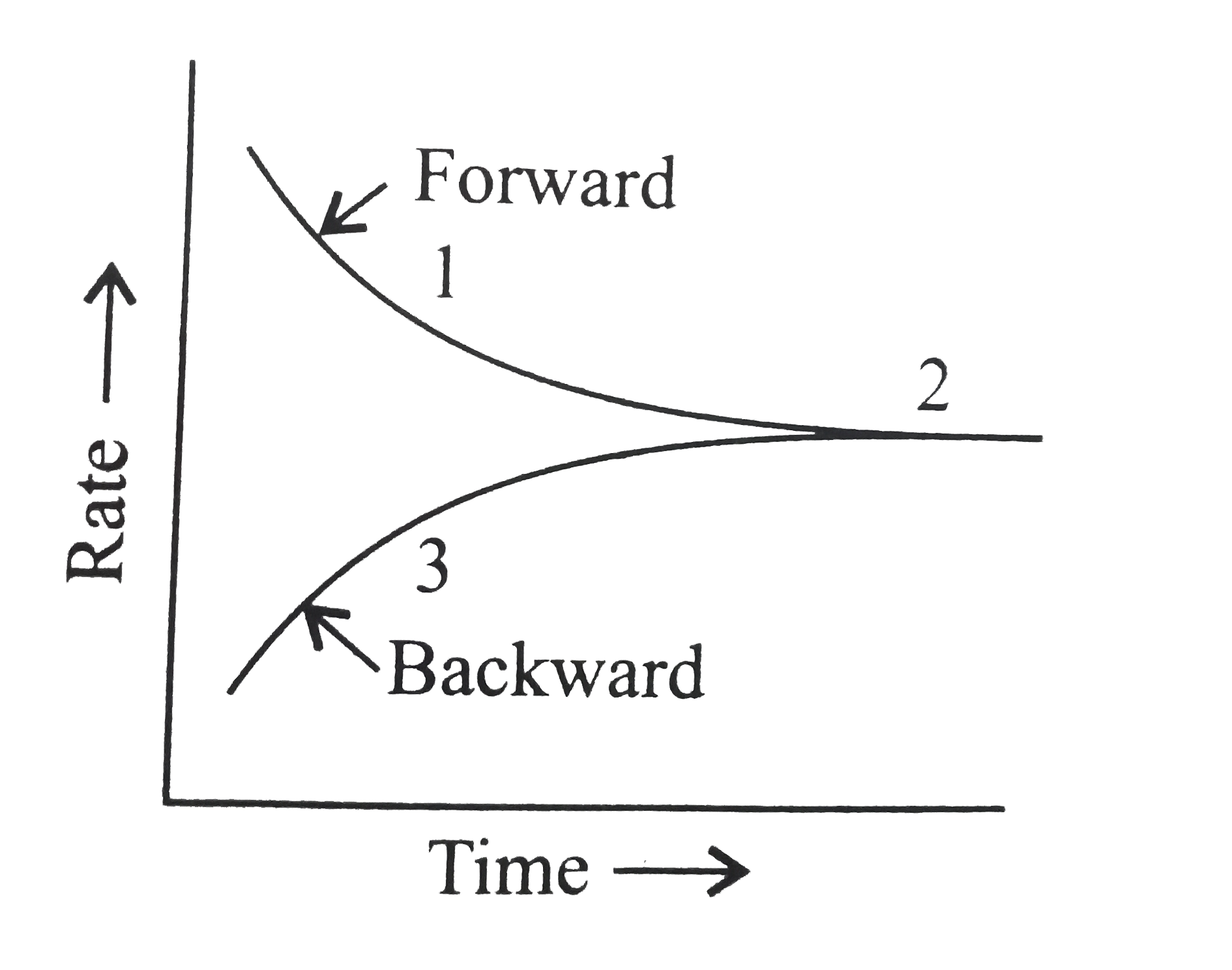For a reaction 2A(g)⇔B(g)Qc>K if 'A' is added maintaining Qc>K, the reaction will move in backward direction.
The correct Answer is:True
Topper's Solved these Questions
- EQUILIBRIUM BOOK - CBSE COMPLEMENTARY MATERIALCHAPTER - EQUILIBRIUM EXERCISE - FILL IN THE BLANKS
10 Videos
- EQUILIBRIUM BOOK - CBSE COMPLEMENTARY MATERIALCHAPTER - EQUILIBRIUM EXERCISE - MATCH THE COLUMNS
2 Videos
- EQUILIBRIUM BOOK - CBSE COMPLEMENTARY MATERIALCHAPTER - EQUILIBRIUM EXERCISE - UNIT TEST
6 Videos
- ENVIRONMENTAL CHEMISTRYBOOK - CBSE COMPLEMENTARY MATERIALCHAPTER - ENVIRONMENTAL CHEMISTRYEXERCISE - UNIT TEST
9 Videos
- HYDROCARBONSBOOK - CBSE COMPLEMENTARY MATERIALCHAPTER - HYDROCARBONSEXERCISE - UNIT TEST
16 Videos
Similar Questions
Mass action rato or reaction quotient Q for a reaction can be calculate using the law of masss action
A(g)+B(g)⇔C(g)+D(g)
Q=[C][D][A][B]
The value of Q decides whether the reaction is at equilibrium or not.
At equilibrium, Q=K
For an equilibrium process, Q≠K
when Q>K, reaction will favour backward direction and when Q<K, it will favour direction.
Answer the following questions:
In the reaction:
NH4Cl(g)⇔NH3(g)+HCl(g)
a graph is plotted to show that the variation or the rate of forward and backward reaction against time.
Which of following is correct?

View SolutionMass action rato or reaction quotient Q for a reaction can be calculate using the law of masss action
A(g)+B(g)⇔C(g)+D(g)
Q=[C][D][A][B]
The value of Q decides whether the reaction is at equilibrium or not.
At equilibrium, Q=K
For an equilibrium process, Q≠K
when Q>K, reaction will favour backward direction and when Q<K, it will favour direction.
Answer the following questions:
The reaction quotient Q for:
O2(g)+2H2(g)⇔2H2O(g)
is given by Q=[H2O]2[O2][H2]2. The reaction will proceed in backward direction, when
View Solution
Knowledge Check
For the reactions
A⇔B,Kc=1
B⇔C,Kc=2
C⇔D,Kc=3
Kc for the reaction A⇔D isA5B6C15D1Mass action rato or reaction quotient Q for a reaction can be calculate using the law of masss action
A(g)+B(g)⇔C(g)+D(g)
Q=[C][D][A][B]
The value of Q decides whether the reaction is at equilibrium or not.
At equilibrium, Q=K
For an equilibrium process, Q≠K
when Q>K, reaction will favour backward direction and when Q<K, it will favour direction.
Answer the following questions:
In the reaction:
NH4Cl(g)⇔NH3(g)+HCl(g)
a graph is plotted to show that the variation or the rate of forward and backward reaction against time.
Which of following is correct?
 AQ>K=3,Q=K=2,Q<K=1BQ>K=2,Q=K=3,Q<K=1CQ>K=1,Q=K=2,Q<K=3DQ>K=2,Q=K=1,Q<K=3
AQ>K=3,Q=K=2,Q<K=1BQ>K=2,Q=K=3,Q<K=1CQ>K=1,Q=K=2,Q<K=3DQ>K=2,Q=K=1,Q<K=3Mass action rato or reaction quotient Q for a reaction can be calculate using the law of masss action
A(g)+B(g)⇔C(g)+D(g)
Q=[C][D][A][B]
The value of Q decides whether the reaction is at equilibrium or not.
At equilibrium, Q=K
For an equilibrium process, Q≠K
when Q>K, reaction will favour backward direction and when Q<K, it will favour direction.
Answer the following questions:
The reaction quotient Q for:
O2(g)+2H2(g)⇔2H2O(g)
is given by Q=[H2O]2[O2][H2]2. The reaction will proceed in backward direction, whenAQ=KcBQ<KcCQ>KcDQ=0
For a reaction if Kp>Kc , the forward reaction is favoured by (T>15K)
View SolutionFor reaction, 2A(g)⇔3C(g)+D(s), the value of Kc will be equal to
View SolutionFor the reaction CO(g)+Cl2(g)↔COCl2(g) KpKc equal to
View SolutionFor the reaction , CO(g)+Cl(g)⇔COCl2(g) then Kp/Kc is equal to :
View SolutionFor a reaction if Kp>Kc , the forward reaction is favoured by (T>15K)
View Solution
